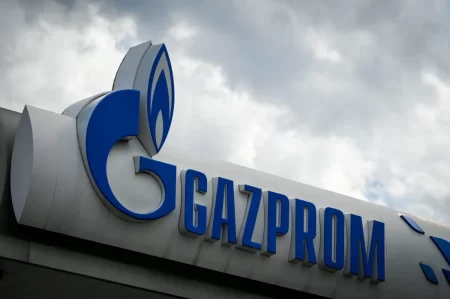 14 April 2013 – Royal Dutch Shell plc remains optimistic that the Chevron Corp.-operated Gorgon liquefied natural gas (LNG) project will move forward according its planned timeline, despite the construction cost impacting LNG projects across Australia that prompted Woodside Petroleum Ltd. to scrap its Browse LNG development plans.
14 April 2013 – Royal Dutch Shell plc remains optimistic that the Chevron Corp.-operated Gorgon liquefied natural gas (LNG) project will move forward according its planned timeline, despite the construction cost impacting LNG projects across Australia that prompted Woodside Petroleum Ltd. to scrap its Browse LNG development plans.
“We feel Gorgon remains attractive even with cost increases,” said Andy Brown, director of Shell’s Upstream International division, in a conference call Friday.
Brown discussed the company’s global natural gas strategy and the growing role internationally of LNG ahead of the LNG17 conference in Houston next week. Shell holds a 25-percent interest in Gorgon.
However, Shell anticipates a moderation in the LNG project activity rate due to cost overruns. The company is looking at options for derisking drilling costs and collaboration opportunities going forward with its proposed Arrow LNG plant, whose supply would come from coalbed methane resources in Queensland. Shell CEO Peter Voser said in November 2012 that the company might delay until 2014 a decision on its Arrow LNG venture, Bloomberg reported.
Brown noted that floating LNG was an attractive alternative that could lower LNG project development costs. Construction of the hull and topsides is currently underway at South Korea’s Samsung Shipyard on the floating LNG vessel for Shell’s Prelude field development project offshore Australia. Prelude LNG will deliver 3.6 million tonnes of LNG and 1.7 million tonnes of condensate and liquefied petroleum gas.
The vessel will weigh 600,000 tonnes, the heaviest object that man has ever built, which Brown called a “real achievement”. Shell acts as operator for the Prelude project and also holds a 6.4 percent interest in the Chevron-operated Wheatstone LNG project.
Globally, Shell sees significant LNG potential. Shell has a number of LNG projects under study worldwide, including Badi in Indonesia, Elba Island in the United States and expansion opportunities at the Gorgon LNG and the Sakhalin LNG project in Russia. Shell’s recent acquisition of Peru and Trinidad midstream LNG assets from Repsol Corp. will add another 4 million tonnes of equity LNG coming to Shell. The $4.4 billion acquisition will generate substantial cash flow moving forward, Brown said.
Shell anticipates natural gas will become the largest energy supply source as global energy demand doubles between 2000 and 2050 due to global population growth.
“While we see renewables growing, we see energy needs being met predominantly by hydrocarbons,” Brown commented. “It is our belief that natural gas will rival both coal and oil as the number one energy supplier.”
Shell produces as much as gas as we do oil, and of the majors, has the largest portion of gas, Brown commented, citing the energy industry’s commitment to promoting the use of environmentally-friendly natural gas.
Brown estimates that 250 million tonnes of gas supply per annum to meet the mismatch in gas demand and supply. By 2025, that demand will grow to 500 million tonnes per annum as LNG demand continues to grow significantly over the next 12 to 30 years.
Gas demand is expected to double in Asia and the Middle East moving forward. Gas demand in China could grow fivefold. Brown expects to see quite a pickup in North America energy demand as the nation finds ways to tap its indigenous gas supply, including its shale gas resources. However, gas demand in Europe will grow at a more gradual pace.
Shell’s LNG strategy for Europe involves the use of LNG in marine transportation. Interestingly, Shell has seen European gas demand decline in Europe, Brown said. The abundance of U.S. natural gas thanks to the development of shale and tight gas has resulted in Henry Hub gas prices undercutting U.S. coal prices. As a result, U.S. coal is now being imported to Europe, where coal-fired power consumption has actually increased in the past two years, Brown commented.
*Karen Boman, Rigzone



